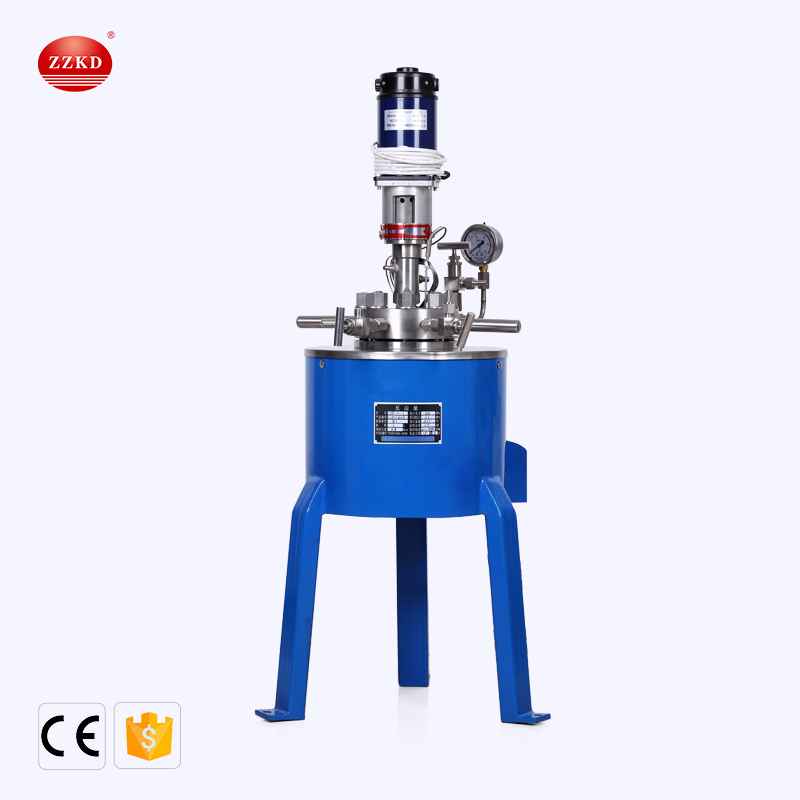How to use high pressure reactor
CF series simple high pressure reactor, FCF series high pressure stirred autoclave, KH series hydrothermal synthesis reactor etc. are our best-selling high pressure reactors.
How to use the autoclave:
The high pressure reactor is a typical innovation of the magnetic transmission device applied to the reaction equipment. It fundamentally solves the problem of shaft seal leakage that cannot be overcome by the previous packing seal and mechanical seal without any leakage or pollution. It is currently under high temperature and high pressure in China. The most ideal device for chemical reaction, especially for the chemical reaction of flammable, explosive, and toxic media, shows its superiority.
Before using the autoclave, it is necessary to do sufficient inspections and preparations to ensure that unnecessary problems occur in the subsequent use. Here is a brief introduction to the preparations before using the autoclave, let’s take a look.
1. There should be no pollutants in the high-pressure reactor. We need to clean the inner wall of the reactor, stirring, cooling coil, temperature probe casing and joint surface with ethanol, and then rinse with distilled water, and then use cotton or Wipe the silk cloth with ethanol to prevent cross contamination of materials. Check whether the valves are unblocked before use, especially the nozzles of the pressure gauge and explosion-proof membrane. For the intake duct, special attention should be paid to whether there is any blockage. If there is material contamination or blockage, the duct and intake branch pipe should be removed from the kettle cover, cleaned, and then installed.
2. After cleaning, wait until the autoclave is dry, and then check its tightness. Put the kettle body in the heating furnace, align the protruding part with the groove, and gently rotate the kettle body. After it is stable, slowly and steadily close the kettle body and the kettle cover, paying special attention to protecting the sealing surface. Avoid collision between the lid and the sealing ring of the kettle body and cause damage to the protective sealing surface, and avoid the collision of the lid and the sealing ring of the kettle body and cause damage. After the cover is closed, check whether the upper and lower joints of the reactor are aligned, gently twist the cover to confirm that the cover is flat and the sealing ring is in good contact. After adding the gasket, start screwing.
3. Don't put the screws wrongly, first tighten them by hand, and then use a torque wrench to form a cross-shaped symmetrical ground to avoid uneven force on the cross-shaped symmetrical ground. Do not twist the screws at once. Tighten the diagonal screws several times, gradually tighten them symmetrically.
4. When checking the air tightness, first check whether the valves (solid feeding port, kettle cover exhaust valve, intake valve, etc.) are tightened, and do not use too much force on the box power supply and its display switch.
5. Connect the nitrogen cylinder to the air inlet of the high pressure reactor through a pipe, and tighten the relevant screws. Open the nitrogen cylinder main valve and partial pressure valve, adjust the pressure of the partial pressure valve to the pressure required for the experiment, and then open the reactor inlet valve to slowly fill the reactor with gas. When the pressure value displayed in the reactor is equal to When the set pressure on the nitrogen cylinder is the same and does not change anymore, close the inlet valve of the reactor and the outlet valve of the nitrogen cylinder in sequence, record the pressure value displayed in the reactor, and observe whether the pressure changes after half an hour.
6. If an obvious downward trend is observed in the pressure, the leak point should be checked. Use soapy water to check all possible leaks in the autoclave. The areas that need to be inspected are: the interface between the reactor cover and the inlet pipe, outlet pipe, and pressure gauge; the needle valve interface at the inlet and outlet, the sealing ring between the kettle body and the kettle cover, and the thermometer probe socket. If leakage is found, the pressure should be vented first, and the corresponding leakage points should be tightened, and then pressurized to test for leakage. After checking that there is no leakage problem, vent the pressure and wash the soapy water with deionized water.
7. Ensure that the pressure in the reactor is completely vented, close the nitrogen cylinder main valve and the partial pressure valve, and vent the residual pressure in the pipeline, use a torque wrench to loosen the main nut in a cross-shaped symmetry, and slowly and steadily connect the kettle body to the When the lid is separated, special care should be taken to protect the cross-shaped symmetry. Special attention should be paid to protecting the sealing surface to avoid collisions between the lid and the sealing ring of the kettle body and cause damage to the sealing surface, and avoid collisions between the lid and the sealing ring of the kettle body And cause damage.
8. After the pressure test is completed, the feeding operation can be carried out. Add the reaction materials and solvent into the clean and dry reaction kettle, repeat the above steps 2 and 3, and seal the kettle body and lid.


